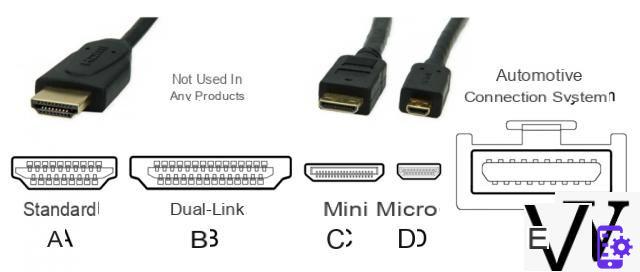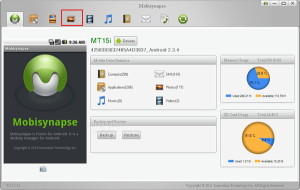
From crossovers to level sedans, our Fjona has had the opportunity to test many and different cars. With today however, we introduce a new category: the electric cars. We have chosen for you Hyundai Ioniq in version full electric. Before going to watch the video review right here at the top, let's give you some sneak peeks in the article.
In the first place for efficiency
Hyundai Ioniq is present in four different versions: the classic with the heat engine, two hybrids (including a plugin) and the greenest of all, full electric. Today we focus on the latter which, in a highly competitive and developing market, has particularly surprised us for its efficiency.
Second Sust-It, independent energy efficiency portal, Hyundai Ioniq is the most efficient car on the European market. In fact, we find an average travel expense of 0,02 €/Km which make the Ioniq the most economical in terms of running costs. The over 28,000 units sold in Europe confirm the quality and long-term savings.
Quiet and with a recovery appropriate to the category, Hyundai Ioniq unloads its 120 horses in a linear way, a typical feature of electric propulsion. The lithium-ion batteries, despite being quite heavy, compensate for the elimination of the heat engine, reaching an overall weight balance of 80 kg less than the hybrid cousin.
The battery pack, housed under the load floor and at the rear, also contributes to a lower center of gravity. Even if the Ioniq lacks the sportiness for which load distribution is essential, this feature makes it more stable in any case.
The average energy efficiency of 14,7 kWh per 100 km it also makes the model very competitive on the EV market. Particular attention was also paid to aerodynamics: the front without open bezels and the rear “coupé” lead Hyundai Ioniq to have an aerodynamic coefficient of 0.24; a great success that further reduces consumption (this time not fuel).
Continuing on the design side, the front gives a touch futuristic which does not clash with the overall aesthetics of the vehicle. The rear, on the other hand, despite being visually appealing, denies the driver the necessary rear visibility, adding a sore point to the final judgment. The extremely inclined rear window obviously does not house the windshield wiper reducing even more the view in rainy situations. Remaining on the rear, little satisfaction also with regard to the capacity of the trunk, 350 liters, lower than the hybrid version.
How many kilometers on one charge?
Futuristic and zero emissions but how many kilometers can the battery pack resist? Officially Hyundai declares 250 Km. With an average driving style and allowing for heating or air conditioning you can travel between 210 and 235 km in total. The 28 kWh total batteries are compatible with the fast charging thanks to the type socket CCS Combo2 in direct current. There are still not many columns equipped for fast charging in Italy and on this model there is still the socket for traditional charging, in addition to the adapter for the home electrical network.
Charging times for complete autonomy vary from approximately 12 hours for the home electrical network to 4 hours for classic columns with type 2 sockets. Rapid columns, on the other hand, significantly reduce waiting times to 25 minutes for 100% charge. Once you have chosen the charging method, you just need to use the electricity manager card, in our case A2A, and connect the corresponding power cables, nothing could be easier. Three luminous LEDs on the dashboard will indicate charging in progress; instead, by turning on the control panel it will be possible to check the charging times.
Technology and driving style
No handbrake or gearbox, otherwise driving is identical to a car with an automatic gearbox. The steering wheel paddles are used to decide the degree of battery regeneration and not to change gears, as in sportier cars.
THEaccumulation of energy during braking it is a fundamental component of the hybrid and electric world: thanks to this technology it is in fact possible to recover part of the kinetic energy of the car through the braking system. With a regeneration set to the maximum level, the machine will give priority to recharging the batteries by decelerating once the foot has been removed from the "gas pedal".
Extremely useful in the city, a place that is generally busy and not very smooth, less practical on the motorway or its fast-flowing streets where a more fluid and responsive ride is required. In addition to the particular regeneration, there are different driving modes that are close to the classic selections of non-electric models. There ECO mode it is useful if you are afraid of staying on foot with the remaining charge, the SPORT one is also fun: the 120 horses of the model in question will contribute to a remarkable recovery compared to the models with the internal combustion engine, obviously with the same weight and power of the vehicle.
In the early days you need to get used to the "noise" of this Hyundai Ioniq: the electric motor is totally silent and the only hint of noise will be given by the rolling of the tires and possibly by the air, at non-urban speeds. So if you are approaching the EV or hybrid market for the first time, be prepared to be surprised.
The navigation system is fully integrated with the electric driving management: the display will provide you with exactly all the information you need for your travel, from autonomy to nearest charging stations. Despite compatibility with Android Auto ed Apple CarPlay we advise you to use the dedicated navigator to understand how far you can go with the residual top-up.
Many satisfactions regarding the ADAS (Advanced driving assistance systems): from adaptive cruise control in lane keeping you will certainly be satisfied with the technology on board. A lot of attention to safety thanks to systems such as assisted hill start, driver fatigue detection and anti-collision system with recognition of vehicles and pedestrians.
Prices and conclusions
The price is not low but it would be wrong to draw hasty conclusions: iThe electricity market is still developing and to make this technology affordable and affordable for everyone, it will take a few more years. Like any commodity contemplated by the market, as long as demand remains high or rising, rival technologies (petrol and diesel in this case) will have to go through a phase in which prices will rise to make it cheaper for businesses to invest in electric or hybrid, and consequently lower the price of these technologies.
No more chatter, Hyundai Ioniq is available starting from 38,000 € for the Comfort version and about € 40,000 for the Style version. Both full of technology, they differ in some details such as leather interior or the electric sunroof.
Keep in mind that the price includes a whole series of incentives such asexemption from stamp duty, the free entrance to area C, free parking on yellow and blue stripes (at least in cities like Milan) and much less expensive coupons than a classic car with a heat engine.
In short, we need to do two math before such a purchase: on the one hand the initial expense can make the purchase unappetizing, on the other hand you will have a four-seater sedan that will save you over time, with decent power for the city and with a lot of technology on board. We invite you to read some news directly on the Hyundai portal and above all to watch the test drive of our Fjona, obviously subscribing to The Driving Fjona channel.
[

























